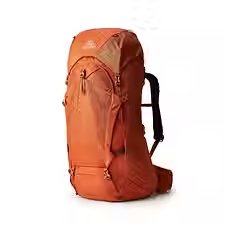_edited.jpg)

Outdoor Gear
New to outdoor gear? We've got you covered with recommendations, a lending library, local outfitters and links to some of our favorite items.
Gear Lending Library
We offer tents, sleeping bags, closed cell pads, backpacking packs, headlamps and other small items of camping gear that individuals and families in the Western New York area can borrow on a first come basis! Just reach out with what you need!
If we don't have what you need, check the locally owned business Gear for Adventure to rent or buy wonderful outdoor gear!!
Recommendations
Tents
There are multiple factors to consider when buying a tent. Size, weight, ease of set-up, ability to withstand inclement weather and cost are some factors. For most camping gear, the lighter it is the pricier it is. Not everyone needs to have the lightest or highest end gear to get started. You can always check your local Buy-Nothing Group or search for used gear to get started!
Brands and Tents I love:
Budget option: NatureHike Cloud-Up 1 person tent. I've tried this brand in 1, 2 and 3 person tents. Affordable, light-weight, easy to set-up, holds up through some major storms, and qualities that remind me of higher end tents I have used.
Higher End Tent: CopperSpur HV UL3 is a well respected tent brand that merges high quality with ultra light weight materials.
Backpacking Packs
Each person is different and having a pack that fits your body is crucial for enjoying your time backpacking. Brands have begun making packs that are specifically designed to fit the body shape of women. A good fitting pack should sit above your hip bones and not bear down on your shoulders. The weight of the pack is carried in your hips. I recommend trying on various packs at your local outdoor store such as Gear For Adventure so you can get a feel for what works best for your frame. When backpacking I recommend a pack that is at least 40L to hold all of your necessary gear. Day hikes, packs can be smaller as long as they fit the 10 hiking essentials.
Two Brands and Packs I love:
Women's Osprey Renn50: High quality brand and 50L pack that is perfect for most backpacking trips. Osprey makes many different backpacking packs.
Women's Gregory Jade53: High quality brand with a wide range of packs and sizes. The 53L is a good middle ground for most backpacking trips. I use the Jade 63L for larger trips or when I take my children with me.
Sleep Systems
There are various sleep systems that you can use for camping and backpacking. For beginners I recommend starting off with a sleeping bag and sleeping pad or mat. There are two types of sleeping bags to consider: Down: known for warmth, lighter weight and size, long lasting quality, but higher cost and does not do as well in damp conditions.
Synthetic: Performs better in damp conditions, more affordable, but may be larger and heavier with a shorter lifetime of use.
For mats and pads you have:
Closed-cell Foam: Light-weight, durable, multi-purpose and guaranteed insulation from the cold ground but may be bulky & less comfortable.
Inflatable: Light-weight, compact, may provide more comfort, but risk leaking and exposing to cold ground.
I personally always carry a closed-cell pad after having one deflate on a cold night. The ability to be used during an emergency as a splint or shelter make it a key item that I always bring. Some people bring both with an added inflatable pad for comfort.
Two Sleeping Bags I love:
Budget Synthetic Sleeping Bag: Scout 20 Degree F Bag has a weight, size and temperature rating are comparable to other more expensive brands for a fraction of the cost.
Down Sleeping Bag: Women's Kelty Cosmic Down 20 is light-weight, rated for 20 degrees, made of quality materials and can often be found on sale.














